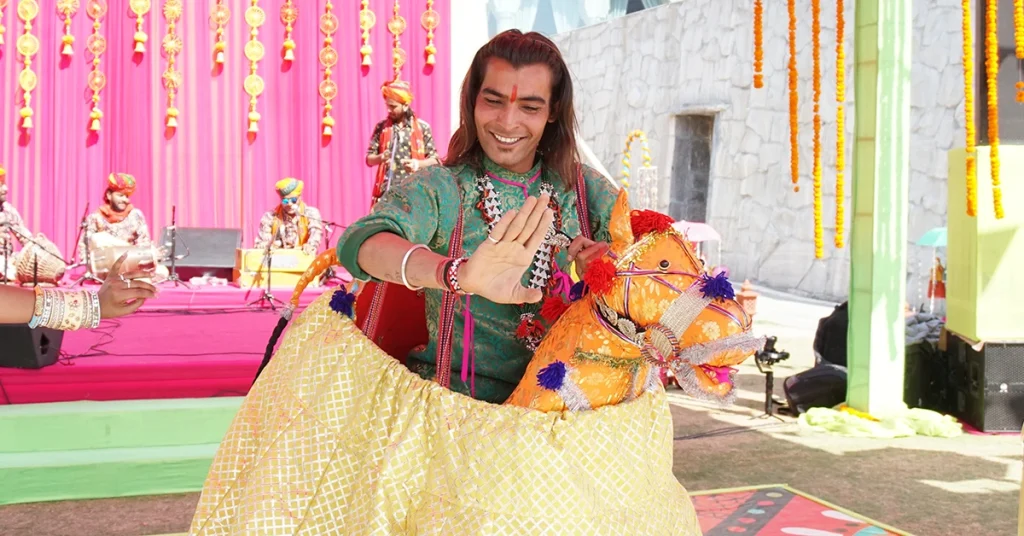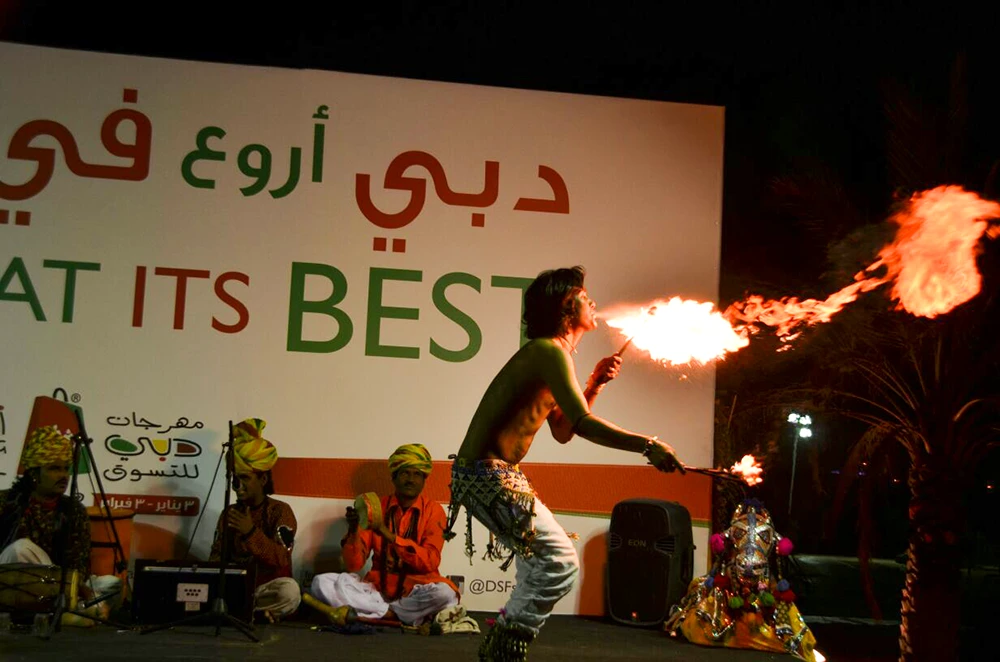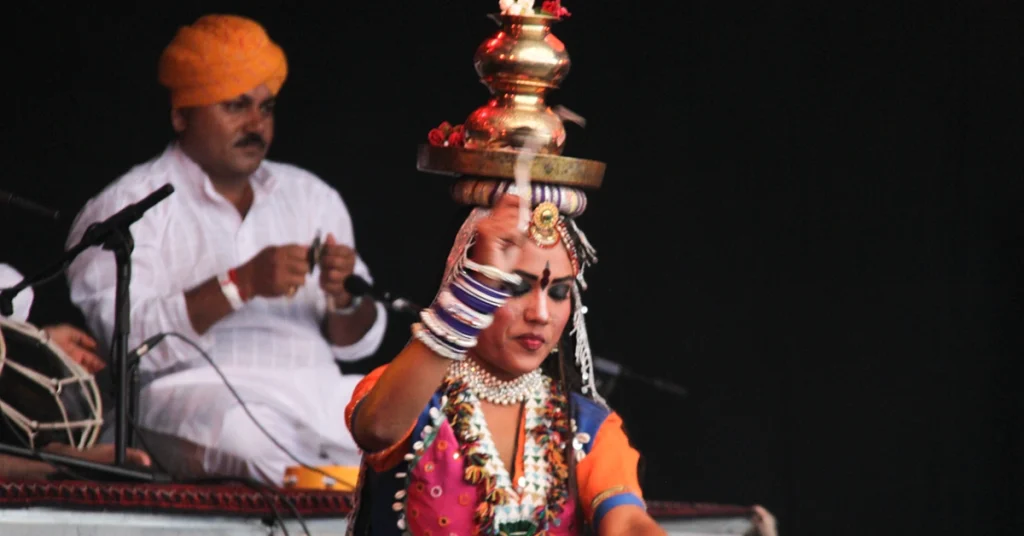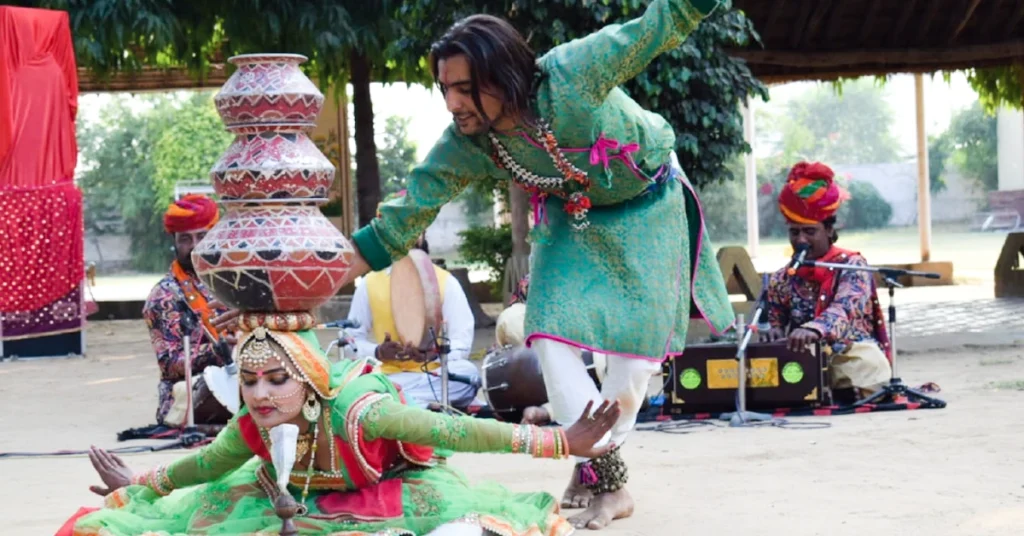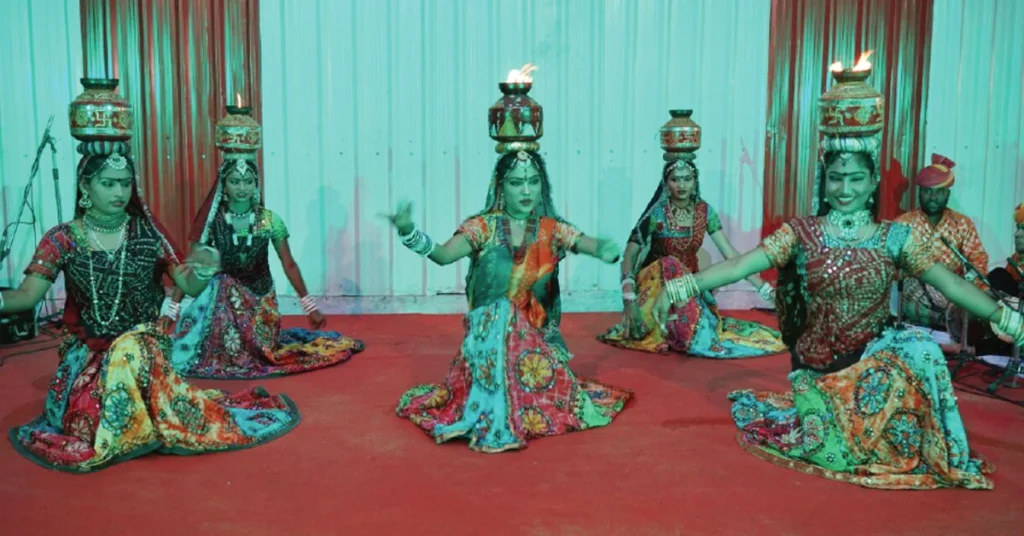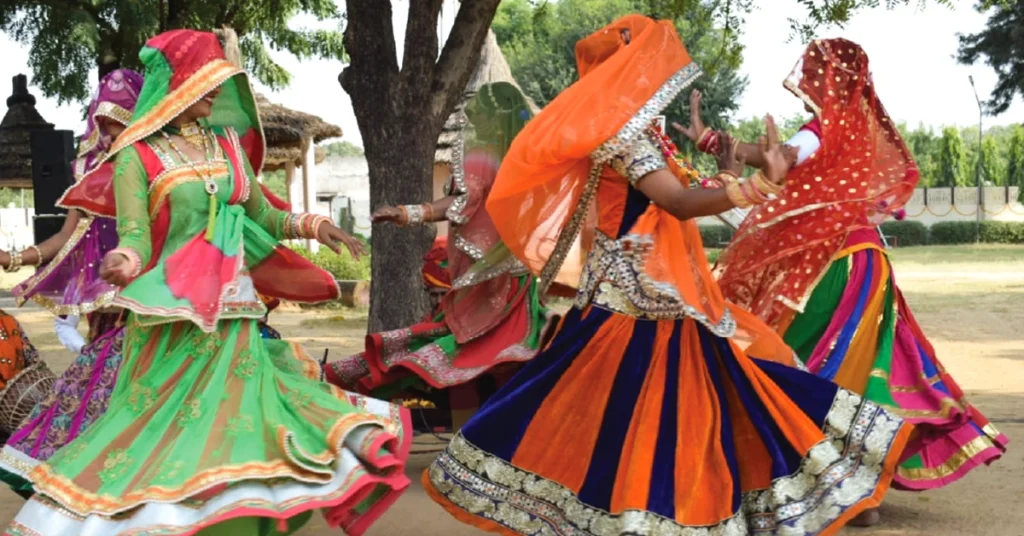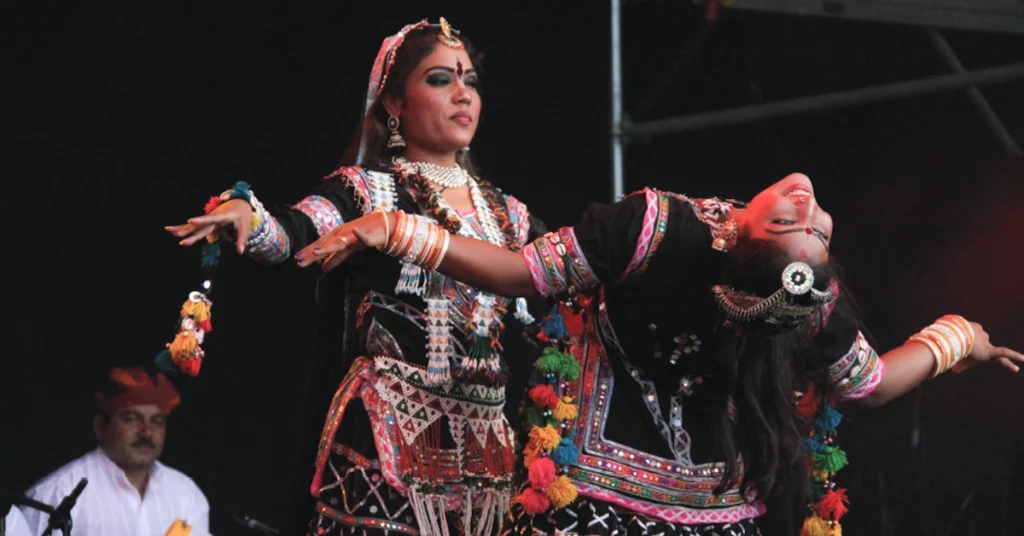KACHCHI GHODI DANCE
Kachchi Ghodi Dance : Originating from the bandit regions of Shekhawati, Kachchi Ghodi Dance is a traditional dance form that is performed during the bridegroom’s party. The dance is performed by men on dummy horses, wearing elaborate costumes such as red turbans, dhotis, and kurtas that are embellished with brilliant mirror-work.
The dancers move rhythmically to the beating of drums and fifes, holding a naked sword in their hand while a singer narrates the exploits of the Bavaria bandits of Shekhawati region through his song. Kachchi Ghodi Dance is a lively folk dance that uses mock fights, brandishing of swords, nimble sidestepping, and pirouetting to the music of fifes and drums. This form of folk dance is generally performed by the tribes of Rajasthan and reflects the socio-historical scenario peculiar to the time or race they depict. Horses have played an important role in the transportation and warfare of Rajasthan since ancient times.
The Kachchi Ghodi Dance is a symbolic representation of the royal power that horses held during those days. The songs in the Kachchi Ghodi Dance are generally about the overt businessmen and traders of the Shekhawati region of Rajasthan, depicting the confrontation of the bandits of the Bavaria clan of tribes with the passing commoners. At Meen Sapera Group, we bring to you the essence of the rich cultural heritage of Rajasthan through our performances of Kachchi Ghodi Dance. With our skilled and professional dancers, we ensure that your wedding or any other celebration is filled with the traditional fervor and the joy of Rajasthan. So, book us today and make your special day a memorable one.

